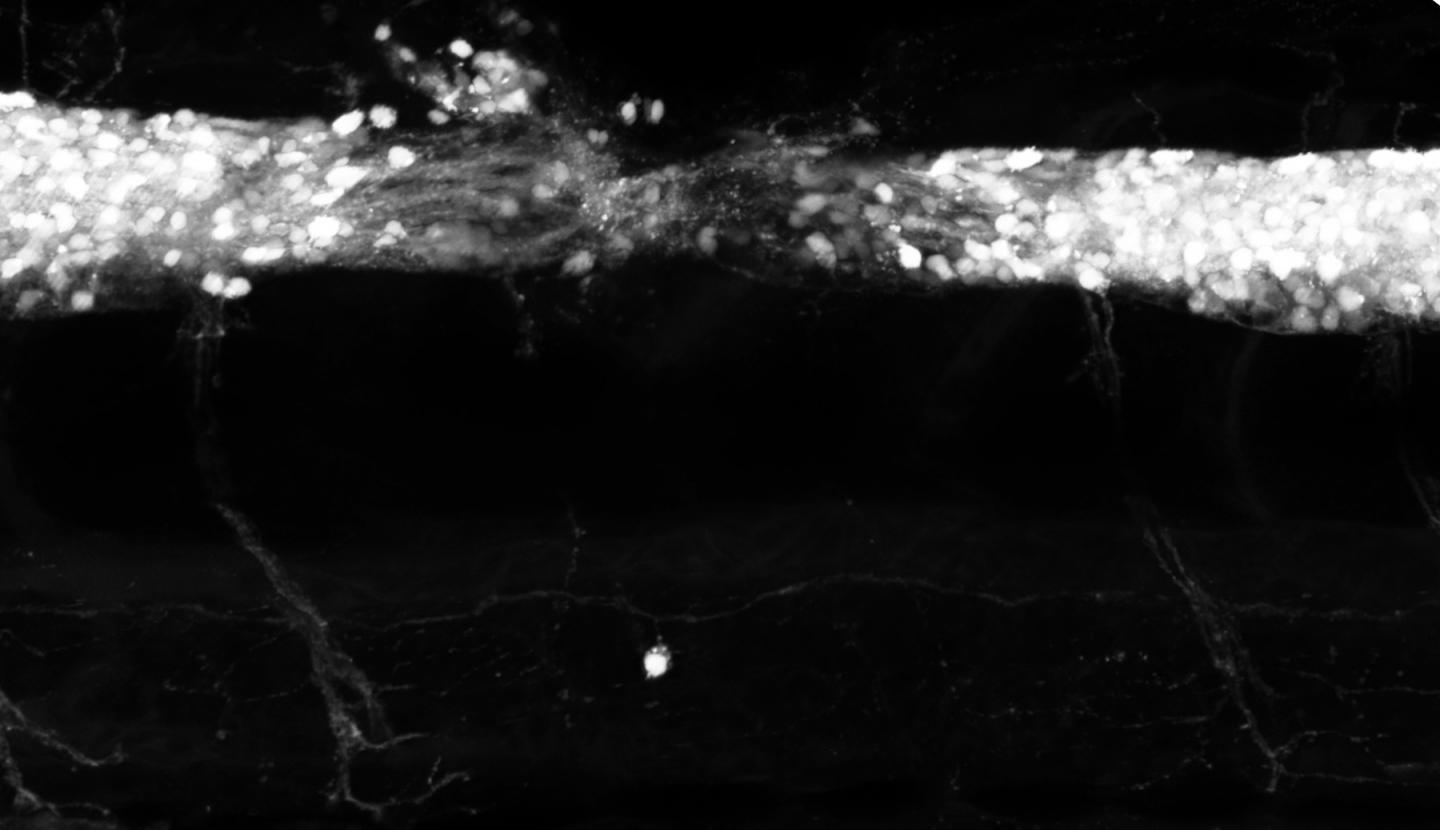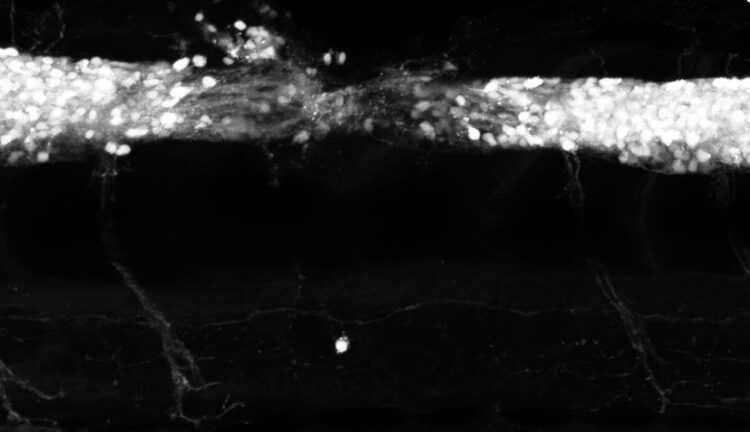Novel method could also be applied to screen for crucial genes in other biological processes

Credit: Keatinge M et al., 2021, PLOS Genetics
A new, rapid screening approach uses CRISPR/Cas9 technology to identify immune system-related genes that play a crucial role in repairing zebrafish spinal cord injuries. Marcus Keatinge and Themistoklis Tsarouchas of the University of Edinburgh, U.K., and colleagues present these findings in the open-access journal PLOS Genetics.
In humans and other mammals, severed spinal-cord nerve connections do not heal, so a spinal cord injury may lead to permanent paralysis. In contrast, zebrafish are capable of recovering from spinal cord injury in a process that involves inflammation controlled by macrophages–a type of immune system cell. However, the precise process by which macrophages aid spinal cord regeneration in zebrafish remains mysterious.
To help clarify this process, Keatinge, Tsarouchas and colleagues developed a new method for rapidly identifying macrophage-related genes that are involved in zebrafish spinal cord regeneration. The strategy employs CRISPR/Cas9 technology, which enables researchers to target and disrupt specific genes, thereby revealing their function. Molecules known as synthetic RNA Oligo CRISPR guide RNAs (sCrRNAs) enable this gene-specific targeting.
The researchers applied the new method to study spinal cord regeneration in larval zebrafish. Key to the method was a prescreening step in which they tested over 350 sCrRNAs that target genes already known to potentially play an important role in inflammation-related spinal cord regeneration. Introducing these sCrRNAs to the zebrafish enabled identification 10 genes that, when disrupted, impaired recovery from spinal cord injury.
Further analysis narrowed the list to four genes that appear to be crucial for repair of severed spinal nerve connections, validating the novel method. One gene in particular, tgfb1, appears to play an essential signaling role in controlling inflammation during the recovery process.
The new method and findings could help deepen understanding of spinal cord regeneration in zebrafish. The researchers also say the method could be adapted to screen for genes that play important roles in other biological processes, as well.
The authors add, “Zebrafish can fully regenerate their spinal cords after injury. Using a new and very rapid screening platform, we discover genes of the immune system that are essential for regeneration. We envision our findings to lead to new insights into the inability of mammals to regenerate and our versatile screening platform to be adapted to other disease or injury models in zebrafish.”
###
Peer-reviewed; Experimental study; Animals
In your coverage please use this URL to provide access to the freely available article in PLOS Genetics:
http://journals.
Citation: Keatinge M, Tsarouchas TM, Munir T, Porter NJ, Larraz J, Gianni D, et al. (2021) CRISPR gRNA phenotypic screening in zebrafish reveals pro-regenerative genes in spinal cord injury. PLoS Genet 17(4): e1009515. https:/
Funding: This work was supported by a Wellcome Trust (https:/
Competing interests: I have read the journal’s policy and the authors of this manuscript have the following competing interests: [DG and HHT are employees and shareholders of Biogen]
Media Contact
PLOS Genetics
[email protected]
Related Journal Article
http://dx.





